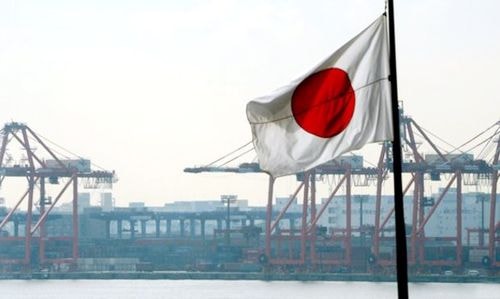"Abenomics" policy and challenges
(Baonghean) - In the context of the world economy facing many fluctuations, Japan has just announced not-so-optimistic figures on the growth of its economy. This is considered pressure on Prime Minister Shinzo Abe's "Abenomics" policy package to help the world's third largest economy escape the two-decade-long period of deflation and recession.
According to economic data released by the Japanese government on August 31, the country's industrial output in July fell 0.6% compared to June, contrary to initial expectations of an increase, partly due to reduced demand from overseas markets and concerns about the slowdown of the Chinese economy. Previously, published figures also showed that the Japanese economy in the second quarter of this year decreased 1.6% compared to the same period last year and decreased 0.4% compared to the first quarter. Weak exports combined with cuts in consumer and business spending were the main reasons for the economic contraction.
The lackluster economic growth results will make Prime Minister Abe’s ambitious economic revival plan, also known as “Abenomics”, vulnerable to criticism. It is undeniable that this is a remarkable success of the economic reform policies implemented over the past 2 years. However, Prime Minister Abe’s economic reform policies have not yet achieved the level of success that economists predicted. The reasons are said to stem from both internal factors and external conditions.
 |
| Abenomics policy faces challenges. Illustration photo: AFP |
First, on the domestic front, economists say the huge fiscal deficit and accumulated debt are holding back any efforts to increase government spending. Japan’s public debt is now at 240% of GDP, much larger than Greece’s and the largest among OECD economies. The Japanese government’s move to raise the consumption tax late last year (aimed at reducing the country’s huge public debt) has stifled consumer spending and pushed the world’s third-largest economy into a brief recession.
In addition, slow wage growth and bad weather that kept people from going out shopping also contributed to the decline in consumer prices. In addition, Prime Minister Abe encouraged businesses to raise wages in exchange for tax incentives, but these companies inflated bonuses instead of fixed salary increases, which did not increase the purchasing power of families. In addition, structural reforms – one of the three key priorities of Abenomics – were somewhat timid. The government decided to liberalize some sectors and develop employment for women, but the country did not open up to immigration – an effective way to compensate for the decline in the working-age population (down 0.5% annually).
In addition to internal factors, according to experts, the reason why Prime Minister Abe's economic reform policies have not been as successful as expected is partly due to the context of the world economy, especially the instability of the Chinese economy. Analytical data by Japanese economist Yuki Masujima has shown that trade with China contributes up to 13% to Japan's GDP. This level is even higher than the contribution from bilateral trade with the US, a traditional customer of Japan. Therefore, for Japan's economic policy, the exchange rate between the Japanese Yen and the Chinese Yuan now has a stronger influence than the exchange rate between the Yen and the USD. When the Chinese Yuan depreciates against the USD, it also means depreciating against the Japanese Yen because the value of currencies is calculated with a large weighting of the USD. Therefore, Japan is one of the victims most affected by China's devaluation of the Chinese Yuan. China's economic slowdown is expected to increase the risk that Japan's economy will continue to grow weakly in the third quarter and is only expected to grow at a rate of 1% for the whole year.
Not to mention, the world's leading economies have not yet made a breakthrough in recent times. Demand for Japanese goods in the US, China and other export markets has decreased and will continue to decrease, causing the Japanese economy to "lose" a large amount of budget.
In the current context, analysts say the Bank of Japan will have to launch more economic support measures, first of all strengthening the monetary easing policy. In the long term, the “Abenonics” policy may have to be further promoted, and according to economic experts, the third arrow of this policy, which is economic restructuring, needs to be carried out more effectively. However, this task is not easy when both internal and external factors are unfavorable to Japan's growth efforts. This once again shows that the world's major economies are facing fragile limits and can cause instability at any time.
Thanh Huyen


